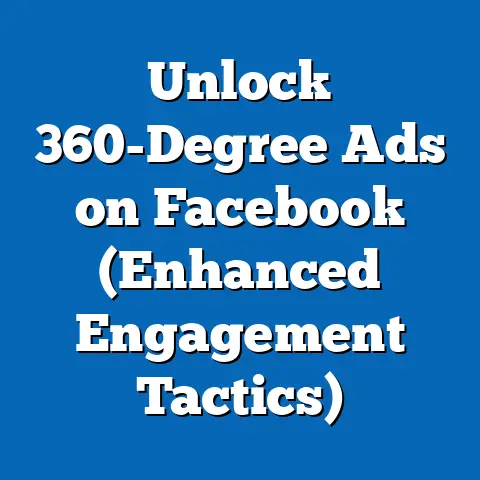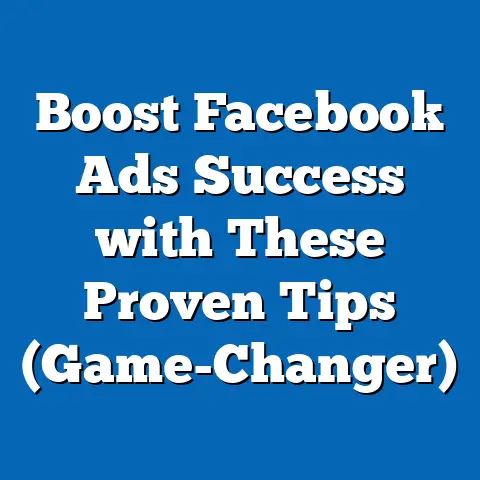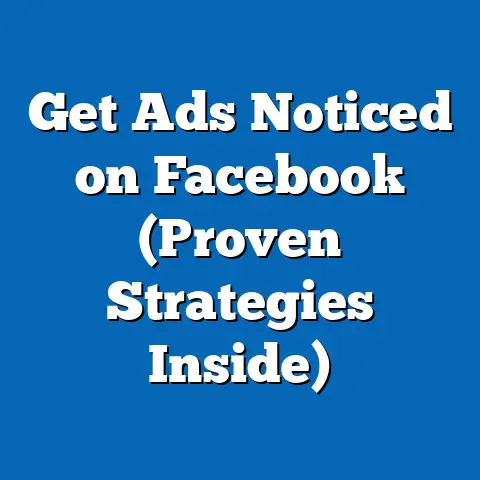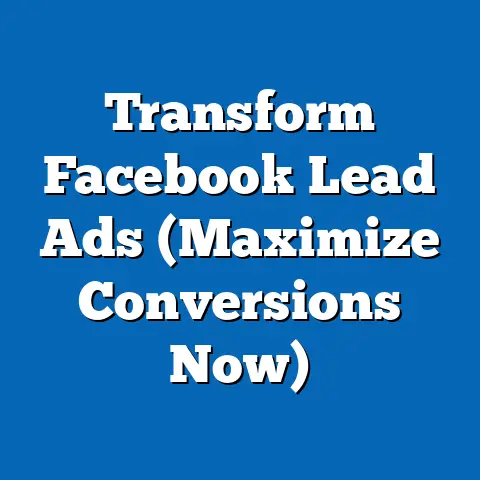Using Facebook Logo in Ads: Legal Insights (Expert Guide)
As a digital marketing expert, I’ve seen firsthand how powerful Facebook advertising can be. It’s a fantastic platform for reaching a massive audience and driving real results for businesses of all sizes. But with great power comes great responsibility, and in the world of Facebook advertising, that responsibility extends to understanding and respecting trademark law, especially when it comes to using the Facebook logo.
Think of the Facebook logo – that simple, recognizable “f” – as a golden ticket to instant credibility and brand association. It instantly tells your audience, “Hey, we’re connected, we’re legitimate, and we’re part of the Facebook community.” But like any valuable asset, the Facebook logo is heavily protected. Misusing it can lead to serious legal trouble, tarnishing your brand image and costing you a hefty sum.
In my experience, many businesses, especially smaller ones, are unaware of the specific legal guidelines surrounding logo usage. They might think, “It’s just a logo, what’s the big deal?” Well, the big deal is that Facebook, like any major company, fiercely protects its brand identity. Ignoring their guidelines can land you in hot water, and trust me, dealing with legal issues is never fun.
Understanding Trademark Law
Before diving into the specifics of the Facebook logo, it’s crucial to grasp the fundamental principles of trademark law. In essence, trademark law protects brand names, logos, and other identifying marks that distinguish a company’s goods or services from those of its competitors. It’s about preventing consumer confusion and ensuring that brands can build recognition and trust in the marketplace.
I like to think of trademarks as a company’s digital fingerprint. They’re unique identifiers that consumers associate with a particular brand. The stronger the association, the more valuable the trademark becomes. This is why companies invest so heavily in protecting their trademarks.
Facebook’s logo, for instance, is a registered trademark. This means that Facebook has the exclusive right to use that logo in connection with its social media platform and related services. Unauthorized use of the logo by others can constitute trademark infringement, which is a legal violation.
So, what exactly constitutes trademark infringement? Generally, it occurs when someone uses a trademark in a way that is likely to cause confusion among consumers. This could include using a logo that is identical or confusingly similar to a registered trademark, or using a trademark in connection with goods or services that are similar to those offered by the trademark owner.
The consequences of trademark infringement can be significant. Companies that infringe on trademarks can face legal action, including lawsuits seeking monetary damages and injunctions to stop the infringing activity. In some cases, infringers may also be required to pay the trademark owner’s legal fees.
From my experience, it’s always better to err on the side of caution when it comes to trademark law. If you’re unsure whether your use of a logo constitutes infringement, it’s best to seek legal advice. A qualified attorney can help you assess the risks and ensure that you’re complying with all applicable laws. Remember, protecting your own brand also means respecting the trademarks of others.
Key Takeaway: Trademark law protects brand identity and prevents consumer confusion. Understanding these laws is essential for avoiding legal trouble when using logos in your ads.
Facebook’s Brand Guidelines
Now that we’ve covered the basics of trademark law, let’s focus on Facebook’s specific brand guidelines. These guidelines are a set of rules and recommendations that govern how the Facebook logo and other brand assets can be used by third parties, including advertisers. They’re designed to ensure consistency and maintain the integrity of the Facebook brand.
I’ve found that many advertisers are unaware of the existence of these guidelines, or they simply don’t take the time to read them carefully. This is a mistake. Facebook’s brand guidelines are your bible when it comes to using their logo in your ads. Ignoring them is like playing Russian roulette with your advertising campaign.
So, what are some of the key rules to keep in mind? Here are a few that I’ve found particularly important:
- Size and Placement: Facebook specifies minimum and maximum sizes for the logo, as well as guidelines for its placement within your ad creative. Make sure the logo is clearly visible and not obscured by other elements. I always recommend leaving ample space around the logo to ensure it stands out.
- Color Specifications: The Facebook logo has specific color requirements. Generally, it should be displayed in its official blue color (Facebook Blue) or in white against a dark background. Avoid using other colors or altering the logo’s color in any way. I once saw an ad where someone had used a neon green Facebook logo – it looked awful and was definitely a violation of the brand guidelines!
- Contextual Usage: Facebook also provides guidelines for how the logo can be used in context. For example, you can use the logo to indicate that your business has a Facebook page or to promote your presence on the platform. However, you shouldn’t use the logo in a way that implies endorsement or affiliation with Facebook if no such relationship exists. I’ve seen ads that try to trick users into thinking they’re being directed to an official Facebook page when they’re not – this is a big no-no.
Beyond these specific rules, Facebook’s brand guidelines also emphasize the importance of using the logo respectfully and in a way that doesn’t damage the Facebook brand. This means avoiding using the logo in connection with content that is offensive, misleading, or violates Facebook’s community standards.
Obtaining permission to use the logo is usually not required for basic uses like linking to your Facebook page. However, for more complex or commercial uses, it’s always a good idea to contact Facebook directly to seek clarification and ensure that you’re complying with their guidelines. You can usually find contact information on Facebook’s brand resource center.
Remember, following Facebook’s brand guidelines is not just about avoiding legal trouble. It’s also about respecting the Facebook brand and maintaining a positive relationship with the platform. By adhering to these guidelines, you’re showing that you’re a responsible advertiser who values the integrity of the Facebook ecosystem.
Key Takeaway: Facebook’s brand guidelines are essential for using the logo correctly. Pay attention to size, color, placement, and contextual usage to avoid violations.
Case Studies of Logo Misuse
To truly understand the importance of adhering to Facebook’s brand guidelines, let’s take a look at some real-world examples of brands that have faced legal challenges for misusing the logo. While Facebook doesn’t always publicly disclose these cases, there are enough examples in the public domain to illustrate the potential consequences of non-compliance.
I’ve personally encountered situations where clients have received cease and desist letters from Facebook for using the logo inappropriately. These situations are never pleasant, and they often involve significant legal costs and reputational damage.
One common type of logo misuse involves altering the logo in some way. This could include changing the color, distorting the shape, or adding elements to the logo that are not part of the official design. As I mentioned earlier, Facebook has strict color specifications for its logo, and any deviation from these specifications can be considered a violation of the brand guidelines.
Another common mistake is using the logo in a way that implies endorsement or affiliation with Facebook when no such relationship exists. For example, a company might use the logo on its website or in its advertising materials in a way that suggests that Facebook has endorsed its products or services. This is misleading to consumers and can damage the Facebook brand.
In some cases, companies have even been accused of using logos that are confusingly similar to the Facebook logo. This could involve using a logo that has a similar shape or color scheme, or using a logo that is associated with a similar type of service. Even if the logo is not an exact copy of the Facebook logo, it can still be considered trademark infringement if it is likely to cause confusion among consumers.
The outcomes of these cases vary depending on the specific circumstances. In some cases, the company may be required to pay monetary damages to Facebook. In other cases, the company may be ordered to stop using the infringing logo. And in some cases, the company may face both monetary damages and an injunction.
The lessons learned from these cases are clear: it’s essential to comply with Facebook’s brand guidelines and to avoid using the logo in any way that could be considered trademark infringement. If you’re unsure whether your use of the logo is compliant, it’s always best to seek legal advice.
I remember one particular case where a small business owner was using a modified version of the Facebook logo on his website. He thought it was a clever way to promote his Facebook page, but he hadn’t realized that he was violating Facebook’s brand guidelines. He received a cease and desist letter from Facebook and was forced to remove the logo from his website. The whole experience was stressful and time-consuming, and it could have been easily avoided if he had simply taken the time to read Facebook’s brand guidelines.
Key Takeaway: Real-world cases demonstrate the potential consequences of logo misuse, including legal action and reputational damage. Compliance is key.
Leveraging Facebook’s Logo Legally
So, you understand the legal risks and the importance of following Facebook’s brand guidelines. Now, let’s talk about how you can legally and effectively incorporate the Facebook logo into your advertising strategies.
I believe that using the Facebook logo correctly can be a powerful way to enhance your brand’s credibility and improve engagement with your target audience. It signals to users that you’re part of the Facebook community and that you understand how to use the platform effectively.
One of the most common and straightforward ways to use the Facebook logo is to promote your Facebook page. You can include the logo in your ad creative to encourage users to like your page and follow your business on Facebook. This can help you build a larger audience and increase your brand awareness. I often recommend using a clear call to action, such as “Like us on Facebook” or “Follow us for updates,” to encourage users to take action.
Another way to use the Facebook logo is to highlight your presence on the platform. For example, you can include the logo on your website or in your email marketing materials to let people know that you’re active on Facebook. This can help drive traffic to your Facebook page and increase engagement with your content.
However, it’s important to use the logo in a way that is consistent with Facebook’s brand guidelines. Make sure the logo is the correct size and color, and that it’s placed in a prominent location. Avoid using the logo in a way that could be misleading or confusing to users.
I’ve also seen some creative uses of the Facebook logo that are both legal and effective. For example, some brands have incorporated the logo into their product designs or packaging. This can be a great way to reinforce your brand’s association with Facebook and to appeal to users who are active on the platform. Just make sure you get permission from Facebook before using the logo in this way.
Ultimately, the key to leveraging the Facebook logo legally is to be respectful of the Facebook brand and to comply with their brand guidelines. By following these guidelines, you can use the logo to enhance your advertising strategies and to build a stronger connection with your target audience.
I had a client who ran a local restaurant. They were struggling to attract new customers through their Facebook ads. I suggested that they incorporate the Facebook logo into their ads, highlighting their Facebook page and encouraging users to check out their menu and specials. The results were immediate. They saw a significant increase in likes and followers, and their restaurant became much more popular among local Facebook users.
Key Takeaway: Use the Facebook logo strategically to promote your page, highlight your presence, and enhance your brand’s credibility, but always stay within the bounds of the brand guidelines.
Conclusion
Navigating the legal landscape of using the Facebook logo in your ads can seem daunting, but it’s a crucial investment for any brand looking to succeed on the platform. By understanding trademark law, adhering to Facebook’s brand guidelines, and learning from real-world examples of logo misuse, you can protect your brand and leverage the power of the Facebook logo to enhance your advertising strategies.
I’ve seen firsthand the positive impact that a well-executed Facebook advertising campaign can have on a business. But I’ve also seen the negative consequences of ignoring the legal considerations. It’s simply not worth the risk.
Remember, the Facebook logo is a valuable asset, but it’s also a protected trademark. Use it wisely, use it respectfully, and use it in accordance with Facebook’s guidelines.
In conclusion, I encourage you to approach your advertising strategies with both creativity and legal awareness. By doing so, you can ensure long-term success and compliance on the Facebook platform. Don’t be afraid to experiment with different ways to use the Facebook logo, but always prioritize compliance with the brand guidelines.
Key Takeaway: Investing in legal knowledge about logo usage is crucial for any brand looking to enhance its advertising efforts on Facebook.
Call to Action
I hope this article has provided you with valuable insights into the legal considerations of using the Facebook logo in your ads. Now, I’d love to hear from you. What are your experiences with using logos in advertising? Do you have any questions or concerns about trademark law or Facebook’s brand guidelines? Share your thoughts in the comments below! Let’s start a conversation and learn from each other. Your insights could help other advertisers navigate this complex topic and avoid potential legal pitfalls.






